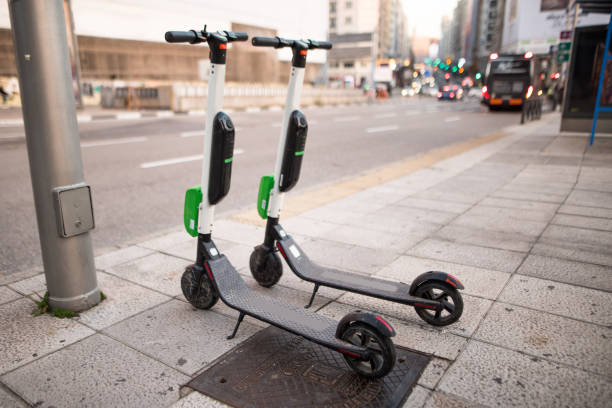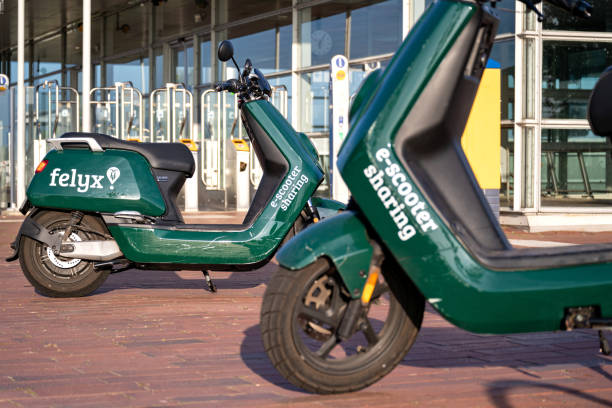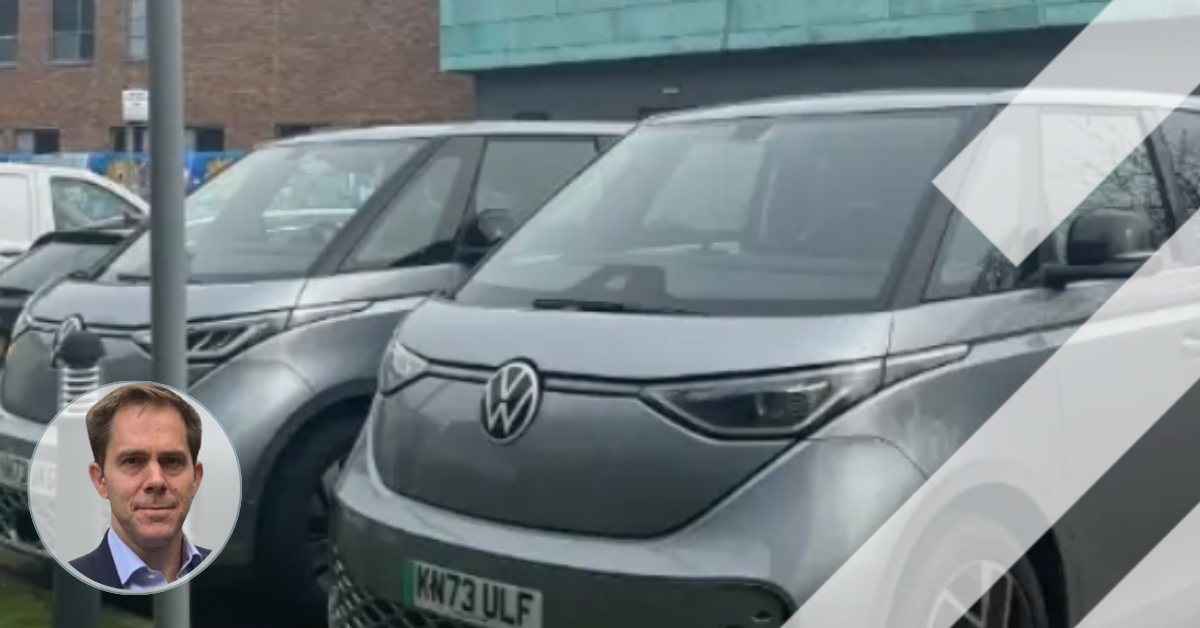In today's rapidly evolving world of transportation, Mobility as a Service (MaaS) stands as a transformative concept that is reshaping how we think about getting from point A to point B. MaaS represents a fundamental shift in our approach to mobility, putting the power of efficient transportation planning, booking and payment at our fingertips through unified digital platforms.
In this blog, we will explore the fundamental concept of MaaS, examining real-world examples that showcase its practical benefits. We will dive into one critical aspect that has traditionally been somewhat overlooked in the MaaS narrative – parking. Parking is a ubiquitous element of urban mobility, and as MaaS continues to evolve, it becomes evident that integrating parking solutions is essential for creating a seamless and comprehensive transportation experience.

What is MaaS?
MaaS represents a paradigm shift in how we approach transportation. At its core, MaaS is a type of service that empowers users to efficiently plan, book and pay for a diverse range of mobility services through a joint digital channel. Users can pay per trip or a monthly fee for a limited distance, and the service should allow roaming, meaning the same end-user app should work in different cities without the user needing to become familiar with a new app or sign up for new services. This approach integrates various modes of transport and associated services into a single, comprehensive and on-demand mobility solution. The fundamental idea behind MaaS is to tailor mobility solutions to individual travel needs, ushering in an era where personally-owned vehicles are gradually giving way to mobility provided as a service.
As the demand for personalised transportation services continues to surge, driven by the emergence of innovative mobility providers like carpooling, bicycle-sharing, scooter-sharing, carsharing and peer-to-peer rental services, MaaS is expected to contribute to a new type of future mobility, which is autonomous, connected, electric and shared. There are many real-world examples of MaaS implementations that illustrate the practical benefits of this evolving concept.


1. Whim
The Whim app in Finland is an all-inclusive MaaS solution. By seamlessly integrating various transportation modes including public transport, shared cars, bikes, e-scooters and taxis into a user-friendly mobile app, Whim offers a true alternative to car ownership. This app enables users to plan, book and pay for their transportation needs all in a single app, presenting a compelling and cost-effective approach to urban travel.
2. Citymapper
Citymapper is a public transit app and mapping service that empowers users by providing real-time information on a multitude of transport options, seamlessly integrating walking, cycling and public transit data for a comprehensive journey experience. Utilising both crowdsourced and official public transit data, Citymapper offers route planning capabilities, ensuring a smooth commute between any two locations within supported cities, presenting users with a one-stop-shop journey experience, complete with real-time arrivals, digital payment options, map views and other features.

3. Simdle Mobility
Simdle Mobility, previously Savvy Mobility, is a MaaS provider that offers highly customisable software solutions tailored to diverse transportation operators, ranging from public transport and airport shuttles to tourism and corporate mobility providers. Simdle Mobility unifies various transport modes into a single user-friendly app, including public transport, ridesharing, peer-to-peer rentals, e-bikes and scooters. The platform's software connects users with the right vehicles based on real-time ride requests and pre-booked rides, offering users the flexibility to choose from an array of transportation options based on their needs and preferences. Since on-demand mobility is a shared service, users with different journey requests will be pooled, and the tablet or smartphone of the driver will contain a list of trips in an order optimised in real time and might include last-minute changes.
How can parking be included in MaaS?
Parking is an intrinsic aspect of urban mobility, and its seamless integration into MaaS is essential towards creating a holistic and efficient transportation experience. This involves reimagining how parking fits into the MaaS landscape, and there are various approaches to including parking in MaaS offerings.
1. Park and Ride
Park and Ride, where drivers leave their vehicles at designated parking lots outside the city centre and use public transportation to reach their destinations, can serve as the basis for a larger MaaS infrastructure, offering commuters a comprehensive and efficient travel experience. MaaS systems can encourage the use of Park and Ride facilities by providing incentives such as discounted parking rates and priority access to public transportation. Real-time information on parking availability, public transportation schedules and ticketing can enhance trip planning and convenience, enabling users to purchase public transportation tickets and other services through a single app or platform. Moreover, MaaS can integrate Park and Ride facilities with other mobility services like bike-sharing and carsharing, providing commuters with a flexible transportation experience where they can park their vehicles at the outskirts, use public transportation and complete their journey using additional modes like bike-sharing, all through one unified app.
The Park and Ride system in Oxford, UK, serves as a highly efficient transportation solution, allowing commuters to park their vehicles in designated lots situated on the outskirts of the city before seamlessly transferring to buses that transport them to the city centre and other key destinations. This system comprises five Park and Ride sites strategically positioned around Oxford's ring road, each served by a frequent and convenient bus service that ensures a quick and hassle-free journey. The buses within Oxford's Park and Ride network offer a range of amenities to enhance the commuting experience, including complimentary WiFi, USB charging points, comfortable seating with tables and even sofas, and wheelchair accessibility. While separate charges apply for both parking and the bus journey, the Oxford City Council website provides detailed information about parking charges and permit applications. Oxford's Park and Ride system is efficiently integrated into the MaaS infrastructure, designed to mitigate traffic congestion and alleviate parking pressures in the city centre while providing residents and visitors with a practical and cost-effective mode of transportation.
2. Multimodal mobility hubs
Multimodal mobility hubs are strategically designed physical locations that harmonise diverse transportation modes. The integration of multimodal mobility hubs into MaaS platforms enhances the travel experience by providing seamless connections between different modes of transportation and offering real-time information on transportation options and availability. Integrated ticketing systems enable users to purchase tickets and access a variety of mobility services through a single app or platform, simplifying the entire journey for travellers.
The Mobipunten project in the Flanders region of Belgium seeks to establish a network of 1,000 mobility hubs, known as mobipunten (Mobihubs), by 2024. These mobipunten serve as transport hubs at the neighbourhood level, offering a diverse range of sustainable and shared transport options. The Belgian Mobipunten website features an interactive map that showcases the current implementation status of these hubs and those still in progress, providing transparent access to this innovative mobility network. Notably, the Flemish mobipunt concept places a strong emphasis on integrating these hubs into route planners and encourages the assignment of unique names to each mobility point, clearly reflecting its neighbourhood location.
3. Parking as a Service (PaaS)
Parking as a Service (PaaS) is a concept that aims to provide a more efficient and user-friendly parking experience by integrating parking solutions into MaaS offerings. MaaS is about the need to go from A to B in an efficient, but also practical and user-friendly way. Means of transportation can be combined, but it should be well integrated and easy to use for it to be successful. With this in mind, the integration of parking platforms like Mobypark further adds to the impact of MaaS. The big advantage would be that untapped resources of unused parking of private owners can be allocated to a wider audience. When shared parking is integrated in MaaS, more efficient journeys and better use of resources are possible.

Take a busy city like Brussels as an example. The movement of people puts a huge pressure on Brussels. Many people keep using their own or, increasingly, a shared car. When unused spots at private parking garages and parking lots are connected to MaaS services through a parking booking platform like Mobypark. Travellers can easily park a little further away from their destination, and use last mile mobility to reach their destination. This reduces the pressure on the busiest areas and stops the need to build more parking garages. More importantly, there will be much less congestion, as around 30% of traffic jams in cities are caused by people searching for a parking spot. When a parking booking platform like Mobypark is included in MaaS offerings, parking in Brussels will be easy, while the city sees a decline in polluting congestion and cars parked in the streets.
Why should parking be included in MaaS offerings?
Parking is an intrinsic component of urban mobility, and it is important to recognise the difference it can make to incorporate parking into MaaS offerings. There are various reasons why parking should be an integral part of MaaS, including its role in providing end-to-end journey support and contributing to resource allocation and sustainability goals.
1. Parking is an inextricable part of urban mobility
Parking plays an essential role in urban mobility, and it is only natural to include it in a larger MaaS infrastructure. By integrating parking services with other transportation options, MaaS platforms can offer users a complete and integrated transportation experience, from the initial point of departure to the final destination.
2. End-to-end journey support
To provide a smooth transportation experience, MaaS implementations need to consider services such as parking and toll payment. For example, accessing a train station may require an individual to use a toll road, park a car, and then ride the train. By including parking services in their offerings, MaaS platforms can support users throughout their entire journey, from the initial point of departure to the final destination.
3. Resource allocation and sustainability
Including parking in a larger MaaS infrastructure allows municipal leaders to better define and allocate their resources, helping them achieve their sustainability goals. By integrating parking services with other transportation options, MaaS platforms can help reduce the demand for parking in congested urban areas, leading to more efficient land use and a more sustainable transportation system.
Conclusion
Mobility as a Service (MaaS) brings together a variety of transportation operators into a single ecosystem of mobility, allowing people to access all their transportation options at once. By offering a single platform for planning, booking and paying for various transportation modes, MaaS simplifies the process of getting around, thereby saving users time and effort, especially in unfamiliar locales.
Perhaps most significantly, this approach to mobility is inherently sustainable, as it encourages the use of eco-friendly modes of transportation and promises to mitigate urban challenges such as traffic congestion, pollution and parking issues.
The integration of parking into MaaS offerings is an imperative step toward creating a comprehensive and seamless transportation experience. As the MaaS concept evolves, it becomes evident that parking plays a vital role in enhancing the user's journey. This inclusion ensures end-to-end journey support, encompassing parking services, toll payments and seamless connectivity to various modes of transport. Additionally, incorporating parking services into MaaS platforms contributes to efficient resource allocation and advances sustainability goals by reducing the demand for parking in crowded urban areas, resulting in more sustainable and user-friendly transportation systems. Ultimately, the synergy of parking and MaaS paves the way for more accessible, efficient and environmentally conscious urban mobility solutions, benefiting both individuals and the cities they reside in.







